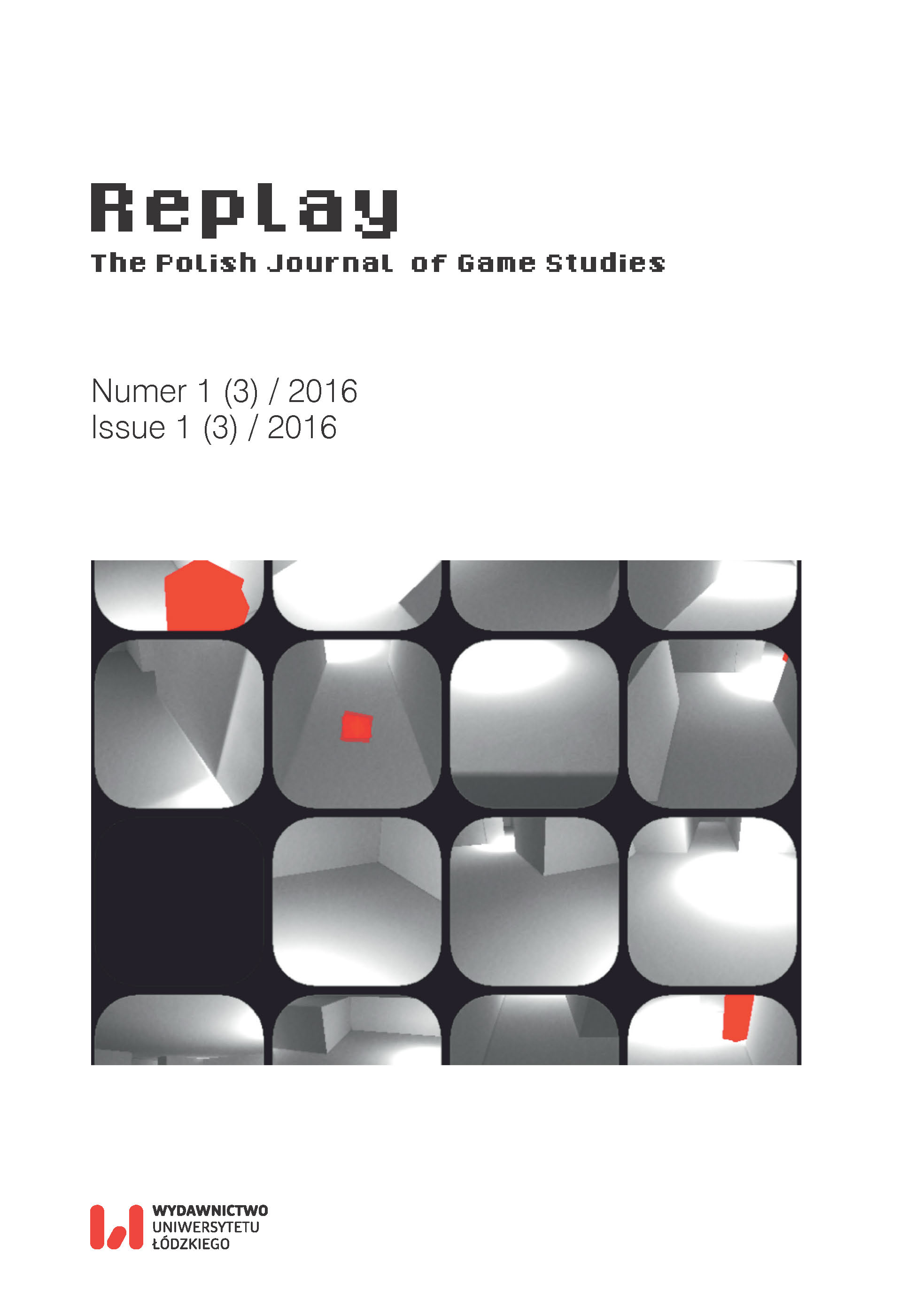Natural User Interface for Education in Virtual Environments
DOI:
https://doi.org/10.18778/2391-8551.03.04Słowa kluczowe:
simulators, virtual environments, 3D environment, serious gaming, sensors, education with KinectAbstrakt
Education and self-improvement are key features of human behavior. However, learning in the physical world is not always desirable or achievable. That is how simulators came to be. There are domains where purely virtual simulators can be created in contrast to physical ones. In this research we present a novel environment for learning, using a natural user interface. We, humans, are not designed to operate and manipulate objects via keyboard, mouse or a controller. The natural way of interaction and communication is achieved through our actuators (hands and feet) and our sensors (hearing, vision, touch, smell and taste). That is the reason why it makes more sense to use sensors that can track our skeletal movements, are able to estimate our pose, and interpret our gestures. After acquiring and processing the desired – natural input, a system can analyze and translate those gestures into movement signals.
Bibliografia
Active Words. (2008, September 18). Retrieved March 10, 2016, from http://www.activeworlds.com
Google Scholar
Aebersold, M., Tschannen, D., & Bathish, M. (2012). Innovative Simulation Strategies in Education. Nursing Research and Practice, 2012, 1–7.
Google Scholar
DOI: https://doi.org/10.1155/2012/765212
Avancini, M. (2012). Using Kinect to emulate an Interactive Whiteboard (Unpublished master’s thesis). Universita Degli Studi Di Trento.
Google Scholar
Barbosa, H. (2014). Delivering 3D, Simulation and Serious Gaming For Education and Training. 3D Visualization World Magazine.
Google Scholar
Bhattacharya, A., Paul, P. S., & Goon, S. (2012). History and comparative study of modern game engines. IJAMS International Journal of Advanced Mathematical Sciences, 3(2), 245–249. Retrieved from ISSN.
Google Scholar
Bontchev, B., & Vassileva, D. (2006). Software architecture of a self-adaptive hypermedia e-learning system. In Proc. of 3rd Int. Conf. on Computer Science. Istanbul, Turkey.
Google Scholar
Bronack, S., Sanders, R., Cheney, A., Riedl, R., Tashner, J., & Matzen, N. (2008). Presence Pedagogy: Teaching and Learning in a 3D Virtual Immersive World. International Journal of Teaching and Learning in Higher Education, 20(1), 59–69.
Google Scholar
Dawley, L., & Dede, C. (2014). Situated learning in virtual worlds and immersive simulations. In J. M. Spector, M. D. Merrill, J. Elen, & M. J. Bishop (Eds.), The Handbook of Research for Educational Communications and Technology (4th ed.). 723–734.
Google Scholar
DOI: https://doi.org/10.1007/978-1-4614-3185-5_58
Dimitropoulos, K., Manitsaris, A., & Mavridis, I. (2008). Building Virtual Reality Environments for Distance Education on the Web: a Case Study in Medical Education. International Journal Of Social Sciences, 2(1).
Google Scholar
Freitas, S. D., & Liarokapis, F. (2011). Serious Games: a New Paradigm for Education? Serious Games and Edutainment Applications, 9–23.
Google Scholar
DOI: https://doi.org/10.1007/978-1-4471-2161-9_2
Galland, S., Gaud, N., Demange, J., & Koukam, A. (2014). Multilevel Model of the 3D Virtual Environment for Crowd Simulation in Buildings. Procedia Computer Science, 32, 822–827.
Google Scholar
DOI: https://doi.org/10.1016/j.procs.2014.05.497
Gaming and simulations: Concepts, methodologies, tools and applications (2011). Hershey PA, NY: Information Science Reference.
Google Scholar
How to use 3D content in simulations for teaching and learning (n.d.). Retrieved September 23, 2014, from https://www.jisc.ac.uk/blog/3d-in-teaching-and-learning-23-sep-2014
Google Scholar
Johnson, M. H. (2005). Sensitive periods in functional brain development: Problems and prospects. Dev. Psychobiol. Developmental Psychobiology, 46(3), 287–292.
Google Scholar
DOI: https://doi.org/10.1002/dev.20057
Kinect – Windows app development (n.d.). Retrieved March 10, 2016, from https://www.microsoft.com/en-us/kinectforwindows/
Google Scholar
Knickmeyer, R. C., Gouttard, S., Kang, C., Evans, D., Wilber, K., Smith, J. K., Gilmore, J. H. (November 19, 2008). A Structural MRI Study of Human Brain Development from Birth to 2 Years. Journal of Neuroscience, 28(47), 12176–12182.
Google Scholar
DOI: https://doi.org/10.1523/JNEUROSCI.3479-08.2008
National Research Council and Institute of Medicine (2000). From Neurons to Neighborhoods: The Science of Early Childhood Development. Washington, D.C.: National Academy Press.
Google Scholar
Sawyer, B., Rejeski D. (2002). Serious Games: Improving Public Policy through Game-Based Learning and Simulation. Washington, DC: Woodrow Wilson International Center for Scholars.
Google Scholar
Stavrev S., Terzieva T. (2015). Virtual environment simulator for educational safety crossing. Proceedings of the 11th Annual International Conference on Computer Science and Education in Computer Science (CSECS), June 4th to June 7th, 2015, Boston, MA, USA, pp. 92–98, ISSN 1313–8624.
Google Scholar
Wagner, R. (2012). Learning with Digital Games: a Practical Guide to Engaging Students in Higher Education – By Nicola Whitton. Teaching Theology & Religion, 15(1), 91–92.
Google Scholar
DOI: https://doi.org/10.1111/j.1467-9647.2011.00770.x
Whitton, N., & Moseley, A. (2012). Authentic contextual games for learning. In Whitton, N., & Moseley, A. (Eds.), Using games to enhance learning and teaching: a beginner’s guide, U.S.A.
Google Scholar
DOI: https://doi.org/10.4324/9780203123775
Zyda, M., Mayberry, A., Mccree, J., & Davis, M. (2005). From Viz-Sim to VR to Games: How We Built a Hit Game-Based Simulation. Organizational Simulation Rouse/Organizational, 553–590.
Google Scholar
DOI: https://doi.org/10.1002/0471739448.ch19
Rockstar North (2013), GTA V (GOTY edition) [videogame][DVD-ROM][Microsoft Windows], Rockstar Games
Google Scholar
TRI Soft (2015), Virtual Platform for Safety Crossing [videogame][DVD-ROM][Microsoft Windows], Didasko Ltd.
Google Scholar










